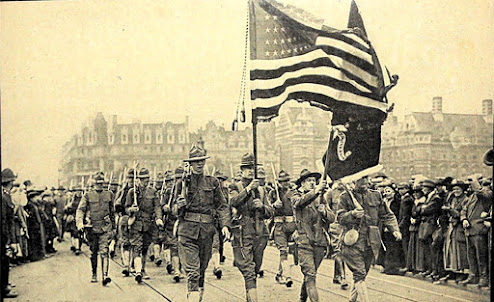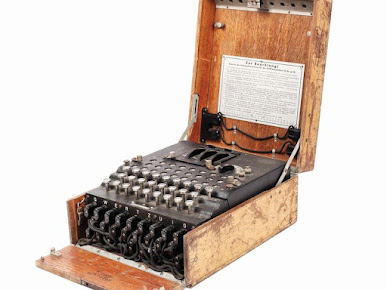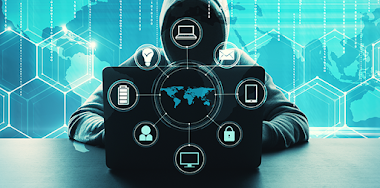World War Cryptography
During the renaissance period, most of the cryptographic methods and new cryptographic concepts are invented by different people and it made a new chapter in cryptography. At that time these methods are good enough to protect secret messages, but after one or two decades these methods became unsafe. Because some cryptanalysts successfully found a way to break these methods. Although they broke these methods, the concept of these methods never vanished and these concepts were improved through new inventions. During the time period of World War, I and World War II the significance of cryptographic methods became very high. Because both parties want to grab the secret messages which were communicated between military high-rankers and the war field. So at that time, both parties pay more attention to invent more powerful cryptographic methods. Ultimately as a result of these conditions more powerful and more reliable cryptographic methods were invented which were difficult to break. And it is not only a war with arms and guns but also with cryptographic mechanisms.
Figure 1 - USA army
What makes the USA involve
During World War 1 every country involved with war hired people to develop strong cryptographic methods and to break the other's secret communication to grab their secret messages. Among these countries, British cryptanalysts played a major role in this war, because they broke one of the most significant encrypted telegraph communications between the German foreign secretary, Arthur Zimmerman, and the German ambassador in Mexico, Heinrich von Eckardt. The reveal of the content in this encrypted telegraph made a reason for the United States to join with the British allies and declare war against Germany. Because through this encrypted telegraph Germany planned to get the support of Mexico against America. The arrival of the U.S into the war field made everything change in German allies and they became defeated. So, now we can see the importance of cryptography and cryptanalysis during World War 1. Britain established two centers for these cryptographic and cryptanalysis work names as “Room 40” and “MI1”.
Not only Britain but also Russia, Germany, Austria, France, and the United States started cryptographic and cryptanalysis work by establishing separate stations. The strength of the cryptography and cryptanalysis work stood as the major reason which decided the winning or losing the war. Because knowing the secret missions of the other allies made it easy to defeat them and defend them.
One-time pad method
The re-invention of the "one-time pad" during WW1 played a major role among the cryptographic methods which were being used at that time. Because it used a key only for one time. In 1882 Frank Miller invented this method but didn’t become well known, but after the re-invention of this method with XOR operation for encryption by Gilbert Vernam, it became well known, and he got a U.S patent for this method. Until the recognition of the loop of reusing the same pad by Joseph Mauborgne, it didn't become a one-time pad. He revealed the loop of using the same more than one time and introduce a method of using a one-time pad with randomly generated keys. After some years later people used easily flammable papers as the pads because it helped to burn them easily without resting any clue. The difficulty of generating true random numbers as a key remained a challenge for using this method. Because it was really hard to generate a truly random number which should be as long as the message we need to send. It was really difficult when distributing such a long key and it caused security problems. And it was very difficult to remember, and it required more space to store these keys. This one- time pad system was highly exploited during the WW1 and WW2. Which was used by both allies? Although it had a lot of security, with a little weakness, the cryptanalysis could be able to break it and got the secret message. There were some incidents of exploiting a one-time pad during the World War, and most of the significant ones were exploited by the U.S cryptanalysis.
Figure 2 - One- time pad
Germany
When the end of World War I, Arthur Scherbius invented the "Enigma machine" as an electro-mechanical machine that can use for encryption and decryption. At that time it considered a well-developed method because it can reach up to 10114 possibilities. Because of that many possibilities, it could not break with brute force attack. The first commercial version of the "Enigma machine” was released in 1920. It had a rotor mechanism that contained 26 letters of the alphabet. There should be two persons to encrypt a message, when one guy was entering the message there were bulbs above in the keyboard which was lighting and give the ciphertext, so the other guy should write the ciphertext which was given by the lights. The same scenario happened when we enter the ciphertext, the bulbs lighted and gave the plaintext. Because the settings were changed daily and according to the message it was very hard to break. And to grab that secret message, the receiver had to know the setting which was exploited by the sender. It didn't remain unbroken at least until the end of World War 2. And series of improved versions of the "Enigma machine" was built by Germany. Because of the “Enigma's” high security, Nazi Germany didn’t expect any failure in this method and they encrypted their secret messages using it. They were overestimated about their system. These overestimate caused the destruction of the Enigma. The failure of “Enigma machine” made British allies to end the war easily. And it again proved the importance of strong cryptographic methods.
Figure 3 - Enigma machine
Japan
When the other allies trying to break the Enigma machine, Japan understood that the Enigma machine was no safer for sending secret messages. So they developed a machine called "purple" as an electromechanical device. And it can be considered as a substitution kind of method. As opposed to the Enigma's rotors, Purple was switching regularly utilized for directing phone signals. During the war, the Japanese were most effective in decimating their encryption machines and they used this device until the end of World War 2. At present, not one complete Purple machine has been found. Because the Japanese were good enough to keep their encryption machine a secret. There were 26 letters in the English alphabet, and they grouped these 26 letters into 2 groups which separately encrypted, one had 20 letters and the other one had 6 letters. So the Japanese had to translate their messages into English to send their message. So, it was very hard for the U.S to decrypt their secret messages. The well-known cryptographer William Friedman developed a dummy of “Purple machine” based on the messages they recovered. Because other than Japanese cryptographers, anyone didn’t see a “Purple machine” and they didn’t know how it worked. At last, they were able to develop a “Purple machine” by knowing the encryption method they were using. This advantage made the United States decrypt Japanese secret messages. Japanese also overestimate their "Purple machine" and they didn't think there were any faults.
Figure 4 - Purple machine
America
Not only Japan and Germany but also the United States had encryption machines that encrypted their secret messages more securely than other countries. Because of this reason, it was very hard to know what the U.S going to do and their secret military plans. And they had more intelligent and well-experienced cryptanalysts. This forced them to win the war. They developed an encryption machine called "SIGABA", and it was used until the end of the Second World War. As same as the German and Japanese encrypting machines, U.S also used an electromechanical system with rotors to encrypt messages. And during its service lifetime, there was no news of successful cryptanalysis of this machine. They considered not to send this device to any allied country where there was not any American person to operate this machine because gave high concern about its physical security. They always kept armed soldiers for the safety of this machine. Although it had a high level of security, it was modified its functions throughout the war. Because America felt fear about the security of this machine because already they had broken the “Enigma machine” and the “Purple machine”, and they thought the same fate will come for “SIGABA”.
Figure 5 - SIGABA machine
England
In the World War period, the British army had to use an encryption machine to send their secret messages. They built a machine called "Type X" which was a developed version of the "Enigma machine" with more security features and it also had a rotor system. Britain used it from 1939 to the mid-1950s. Some models of “Type X” machines achieved the speed of 20 words per minute, and the output of ciphertext and plaintext came as a printed paper. These machines used Vaseline as a lubricant to the rotor disc contacts because otherwise there were risks of burning the insulation between the contacts from the arcing.
Figure 6 - Type x machine
These are the descriptions of the cryptographic mechanisms and tools which were exploited during world war I and II and these things make a huge impact on those wars. In the next chapter, we will talk about modern cryptography and future trends of cryptography.









❤️❤️❤️💖
ReplyDeleteThank you ♥️😘
Delete💖💖
ReplyDeletethank you ♥️😘
DeleteGood work!
ReplyDeletethsnk you yasasi ♥️😘
DeleteThis really help full for studies. Keep it up. Do more articles like this. Well done ❤️🥰
ReplyDeletethank you anoma ♥️😘
Delete👍
ReplyDeleteThank you ♥️
Delete👌.elah..👍
ReplyDeleteThank you ♥️
DeleteGood..
ReplyDeleteThank you ♥️
Delete👍👍
ReplyDeleteThank you ♥️
DeleteWow, what a beautiful work!
ReplyDeleteThank you ♥️😘
Delete👏👏👏
ReplyDeleteThank you ♥️😘
Delete👍👍👍
ReplyDeleteGood article.
ReplyDeleteThank you ♥️
Delete👌👌
ReplyDeleteThank you ♥️
DeleteVery informative 👌
ReplyDeleteThank you Sithiji ♥️😘
Deletegood article keep it up
ReplyDeleteThank you ♥️
DeleteGood article👍👍
ReplyDeleteThank you ♥️
Deletereally helpful article. Well done brother ❤️
ReplyDeleteThank you ♥️😘
DeleteHelpful article .. keep it up..❤️
ReplyDeleteThank you ♥️
DeleteThis comment has been removed by the author.
ReplyDeleteGood work
ReplyDeleteThank you ♥️
DeleteGood one.keep it up 😇
ReplyDeleteThank you ♥️
Deletegood infromation and great work <3
ReplyDeleteThank you ♥️
DeleteThank you Piyumali♥️😘
ReplyDeleteThank you ♥️
ReplyDeleteThank you ♥️
ReplyDeleteThank you all ♥️😘😍
ReplyDelete